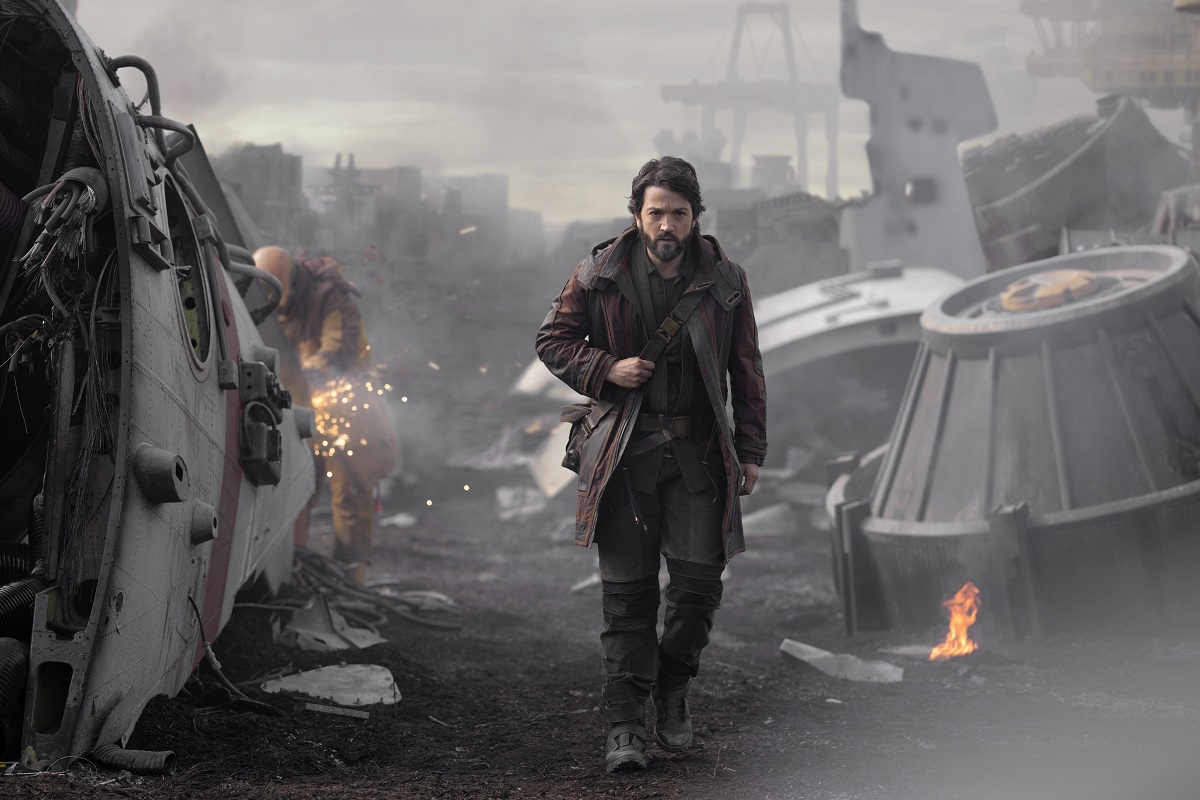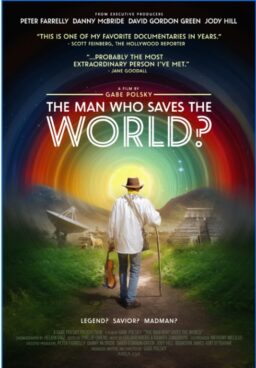After watching the series premiere of “The Book of Boba Fett,” my son asked me why every “Star Wars” show was set in the desert. I didn’t have a good answer for him. Of course, “The Mandalorian” sometimes went to less sandy climes, but it’s indicative of how much the Lucasfilm/Disney+ shows have looked relatively similar since they launched, and the first thing that one notices about “Andor” is that it stands out visually and tonally from the Favreau programs. No diss on the “Iron Man” director intended, but these episodes simply have a richer visual language, taking into account things like artistic framing and a production design of a world that’s more lived-in and three-dimensional. Of course, something similar could be said about “Rogue One: A Star Wars Story,” the film for which “Andor” is a prequel. Ultimately, I find it hard to believe that anyone who liked that film won’t be drawn in by “Andor,” and it may even bring a new level of appreciation from those who didn’t respond to the movie the first time around. While the pacing here can be a bit problematic—the first two episodes could have been easily condensed into one—“Andor” is more confident than most Lucasfilm or Marvel shows, which often feel like they desperately play to fan feedback, wanting so badly to be liked that they focus-group everything down to a mediocre sameness. “Andor” won’t be for everyone. That’s a good thing.
The first season of “Andor” is set five years before the action of “Rogue One,” and its twelve first-season episodes will reportedly unfold over roughly a year’s time for its titular character with the second and final season filling in the remaining four years. Diego Luna returns as Cassian Andor in a show that feels structured to reveal how he became an important figure in the Rebel Alliance. How does an ordinary guy become a central part of a revolution? Prequels often just repeat known details, filling in gaps with easter eggs instead of character, but creator Tony Gilroy (the “Michael Clayton” scribe who co-wrote “Rogue One” returns to write the series) is more interested in a nuanced birth story for a revolutionary. History often records only the major events, but how the people involved got to that point can be just as fascinating.

Don’t get me wrong, the Andor of this show is already on the fringe of saving the universe, having fought with the Rebellion for years, but the tone of the premiere is more of a noir than a sci-fi action epic. This Andor is more of a drifter than a leader, someone whose life has been dismantled by the Empire but hasn’t yet been radicalized to fight back. The opening episodes center a classic MacGuffin, a box that was stolen from the Empire and is being sold by Andor but isn’t really as important as what it means and what its possession does to the characters around them. It’s an item that Andor is trying to pawn to secure transport that draws the attention of the Empire, bringing him deeper into a conflict that will include new characters played by Stellan Skarsgård, Adria Arjona, Denise Gough, Kyle Soller, and Fiona Shaw, along with familiar ones like Forest Whitaker’s Saw Gerrera and Genevieve O’Reilly’s Mon Mothma. Alex Lawther (“The End of the F**king World”) and Ebon-Moss Bachrach (“The Bear”) show up in the fourth episode as Andor gets more entrenched in a building revolution and the series opens up even more. Tony Gilroy hands off writing duties to his brother Dan Gilroy (“Nightcrawler”) for episodes four through six and Toby Haynes (“Black Mirror: USS Callister”) helms the first three episodes before passing the lightsaber to Susanna White (“Parade’s End”).

It’s quite the pedigreed cast and crew for any show, and the dedication to craft in the team assembled to bring “Andor” to life pays off. Luna is particularly good, never overplaying the pretentious possibilities of a future hero. He clearly sees this as a character study that happens to be set in space instead of a part of a growing canon, and that realism grounds the entire piece. It’s also a show with strikingly strong visual compositions, taking into account elements like lighting, character placement in frame, and production design in ways that genre television often ignores. Even the score is richer and more distinct than a lot of Disney+ shows, and the editing is tighter.
As for the writing, it’s arguable that Gilroy clears his throat a bit too much in the first two episodes but the third is a banger as it gets Skarsgård and Luna together and really kicks off the action of the show. Be patient if the first two chapters are a little slow—they undeniably are—but it pays off before the first night of programming is over with one of the best Disney+ episodes of television to date. And then the fourth is what “Andor” is more likely to be over the run of the season, a balance of character and the unfolding story of a growing revolution.
“These days will end, Cassian Andor,” says Skarsgård’s Luthen Rael, and there’s a sense that this is ultimately a show about how people can’t just literally keep their blinders on forever—sometimes we’re pushed into revolution more than it ever being a choice. History is often forced upon us. Days will end. Eventually, we have to leave the desert.
Four episodes screened for review.












